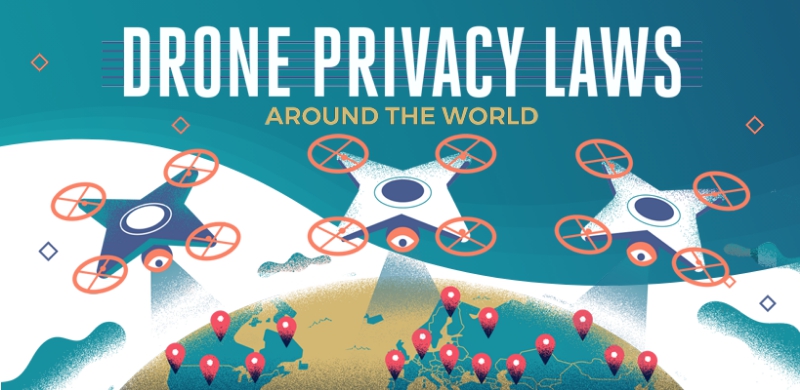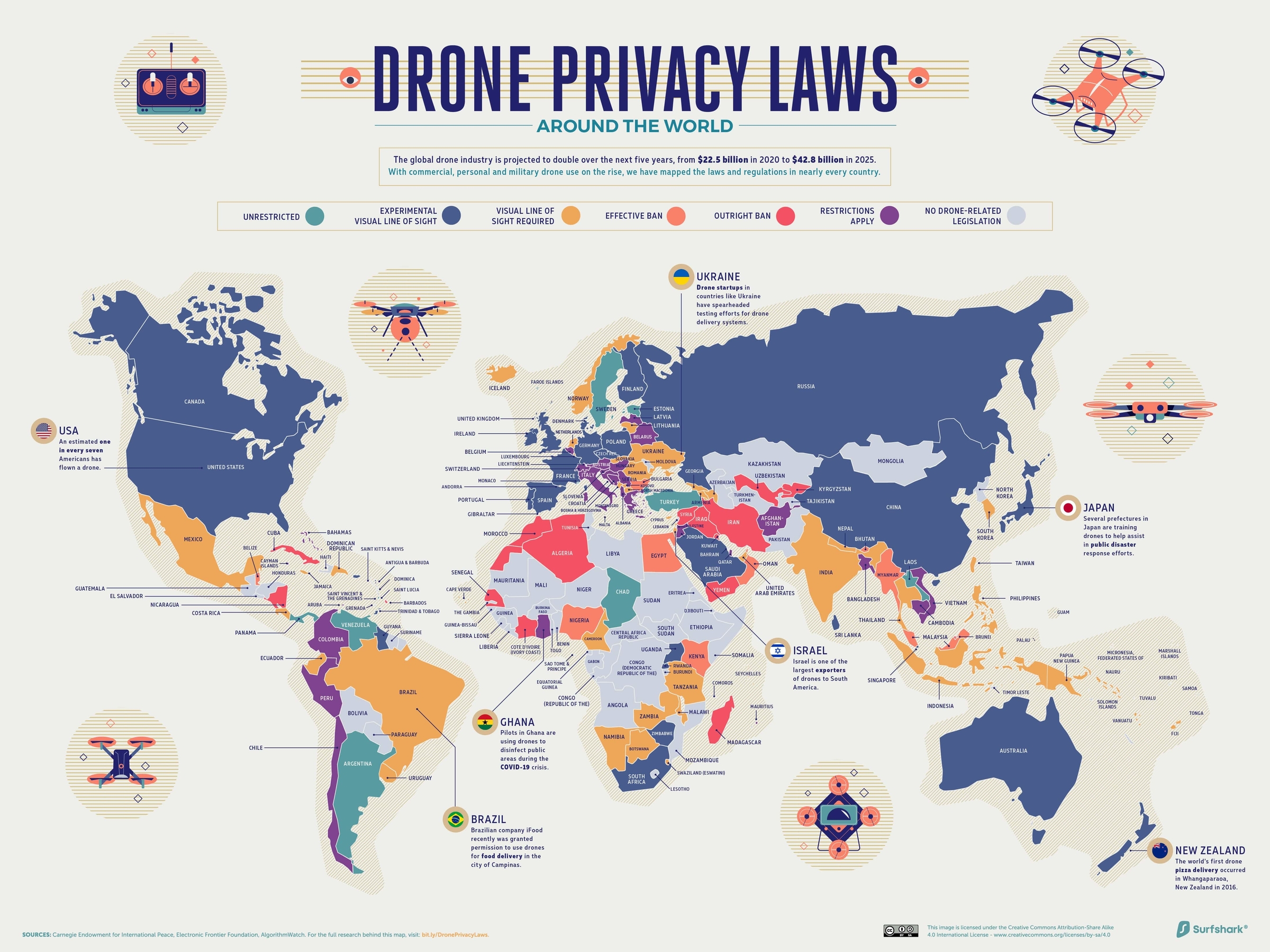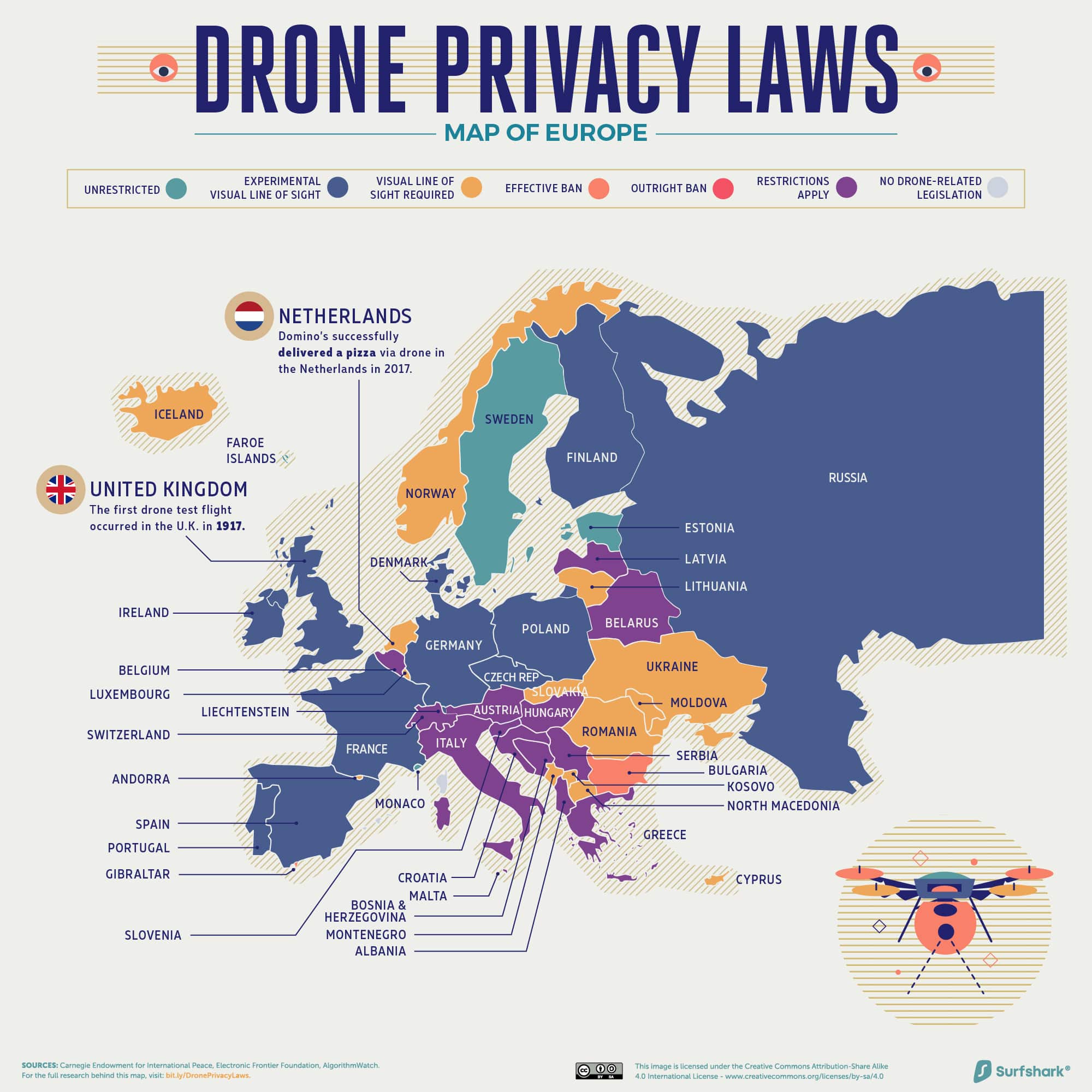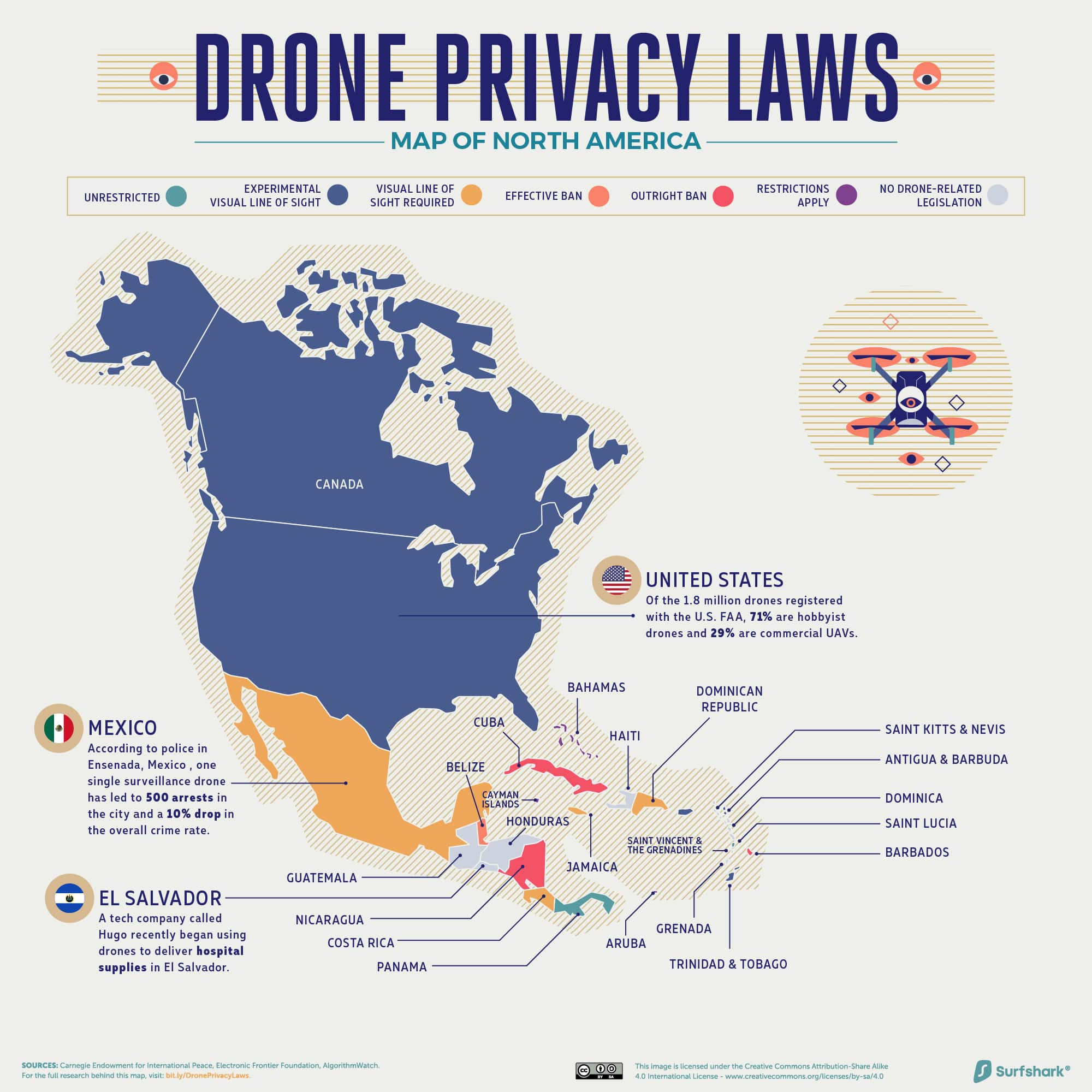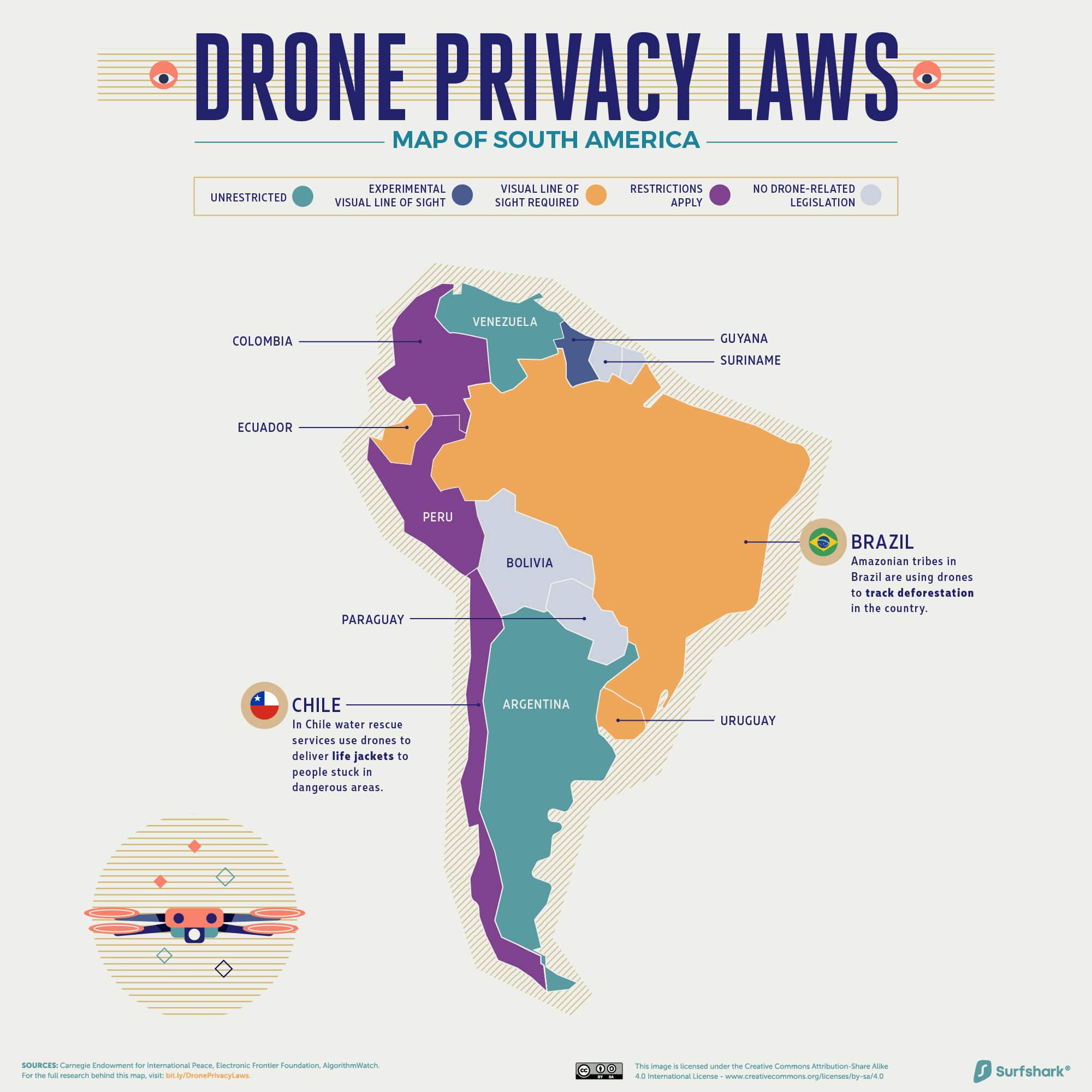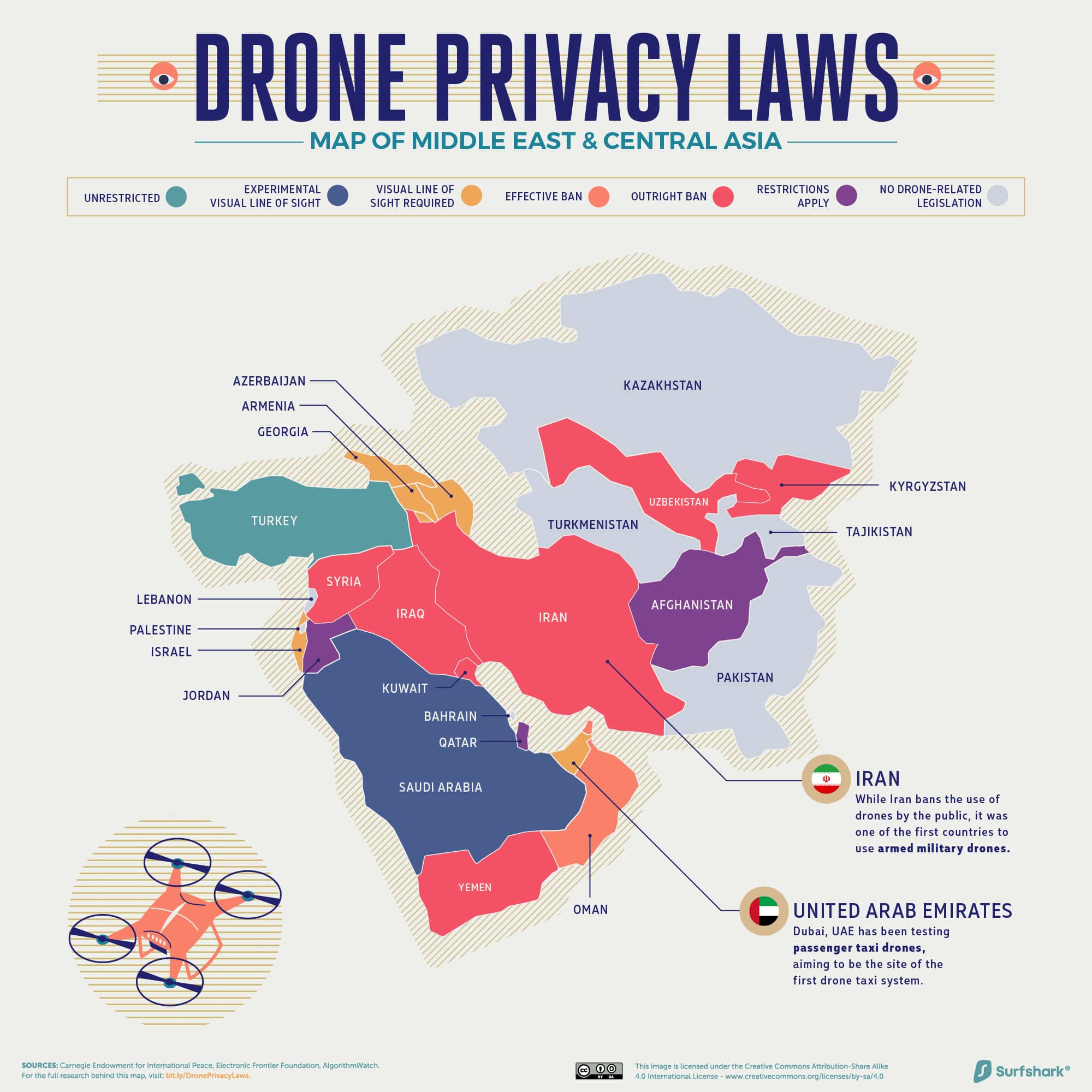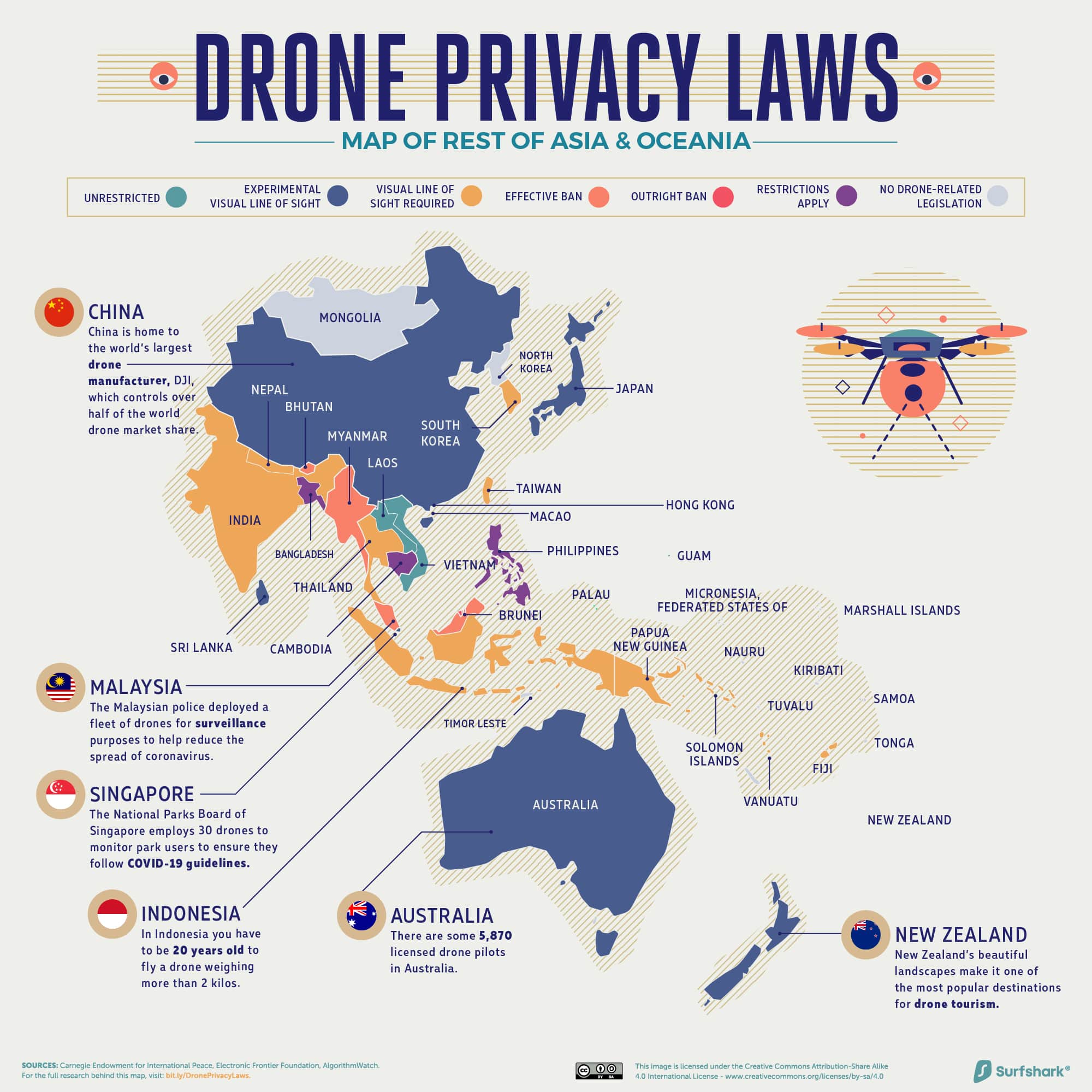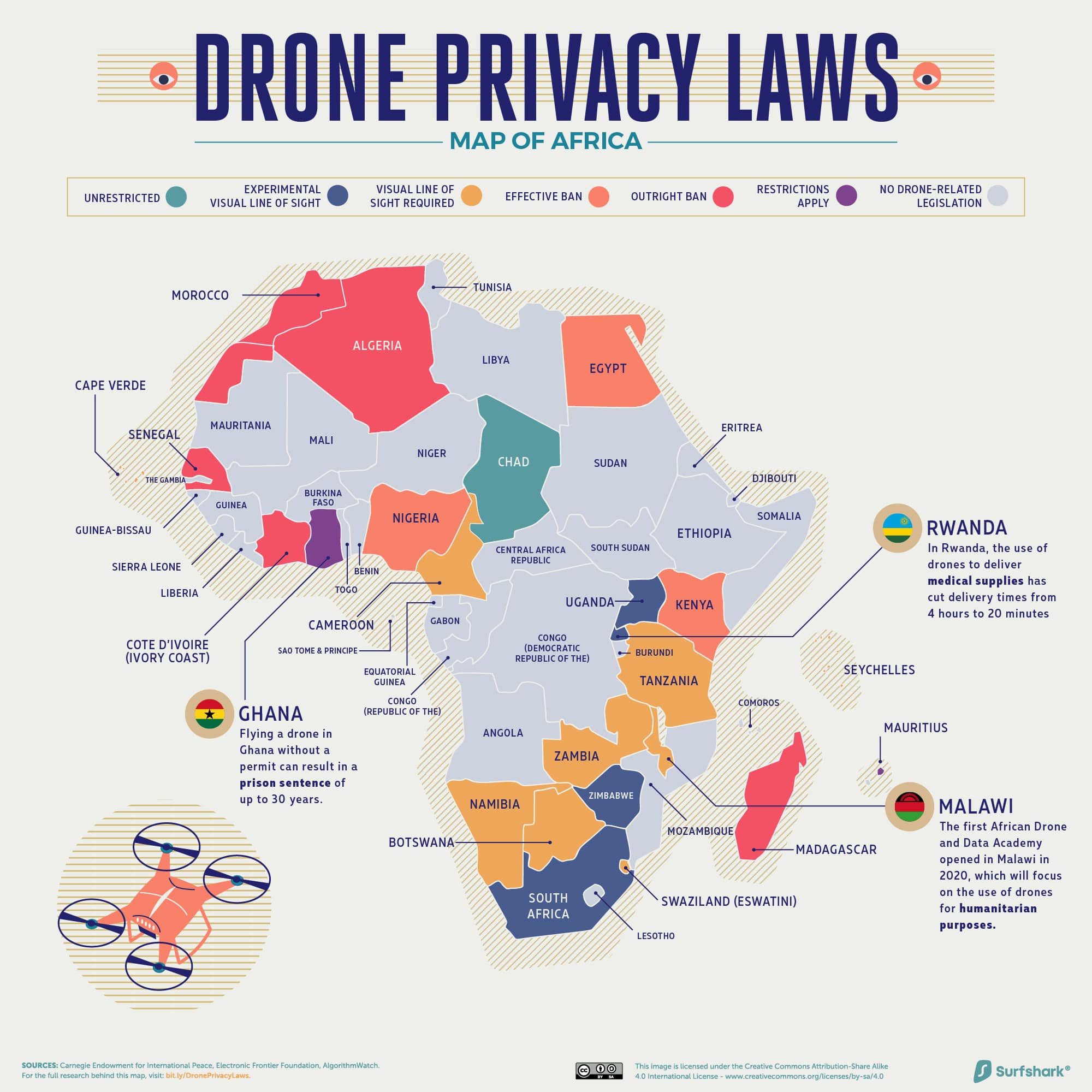This in-depth survey from Surfshark is a detailed study of drone privacy laws around the world and drills down into a region-by-region analysis.
As the use of drones expands around the world — according to the Federal Aviation Administration, there are currently 1.7 million drones registered in the United States alone — lawmakers have been faced with new and complex regulatory challenges to protect the privacy of ordinary citizens. The increased prevalence of drones has raised the prospect of pervasive surveillance by governments, companies, and individuals, and lawmakers are struggling to keep up with the advancing technology.
And while at least 143 countries have enacted some form of drone-related regulation, many experts contend that current drone regulation is insufficient to deal with the threat of widespread surveillance. Drone laws around the world range from outright bans of the technology to relatively unrestricted flight, but most legislation focuses on how the drone is being operated — and does not address nuances related to privacy. Many of the privacy threats that have lawmakers concerned are speculative and rely on the technology of tomorrow — making it difficult to pass privacy-specific legislation today. In the meantime, lawmakers have been able to pass laws concerning drone operation, which are a first step to “privacy by design” legislation, restricting where and how a drone can be flown to minimize opportunities to violate privacy in the first place. To support the effort to establish an international regulatory framework for drone legislation, we looked at drone operation laws in over 200 countries around the world.
Lawmakers around the world have responded to the growing use of drones in various ways. While some countries, such as Cuba, Iraq, Iran, and Kuwait, have outright banned the use of unmanned aircraft, others have passed legislation allowing for more experimental use of the technology.
On every continent, at least one country allows drones to fly what experts term “beyond visual line of sight”, meaning the aircraft can fly to areas beyond the view of the pilot. In Finland, for example, where the home of FAI Drone Racing World Cup is held, pilots can obtain a permit allowing them to pilot drones outside of their view with special first-person view goggles.
To see how drones are being regulated around the world, we compiled data on drone-related legislation for 210 countries. We looked at drone-related legislation for specific countries and analysis of drone-related legislation from sources such as UAV Coach, RAND Corporation, UAV Systems International, and the Library of Congress.
We found that drone regulation in each country generally fell into one of seven categories:
- Outright ban
- Effective ban
- Restrictions Apply (such as drone registration or licensing, additional observers required, no commercial usage etc..)
- Visual line of sight required
- Experimental visual line of sight (experiments where drones fly beyond the line of sight are allowed)
- Unrestricted (when flying away from private property and airports, under 500 ft/150metres height and with drones weighing less than 250g)
- No drone-related legislation
We assigned each country a category status based on its legislation as of October 2020.
Europe
Europe currently has some of the most liberal drone regulation of any continent. Although many of the countries in the continent have some form of drone legislation restricting drone usage, these are often in the form of simple operational guidelines.
Drone pilots in Latvia, for example, are required to wear an identifying piece of clothing, such as a hat or a shirt. In Austria, pilots are required to get a license if the drone weighs more than about half a pound and flies above 98 feet.
North America
While the bulk of countries around the world require drone pilots to be able to see the UAV at all times, 33% of countries in North America allow for experimental drone flights beyond the line of sight, the largest share of any continent and far above the 22% global average.
The large number of countries allowing experimental drone flights may be related to the presence of tech companies like Amazon, Walmart, and DHL, which are researching ways to incorporate drones into their delivery infrastructure and developing methods to ship lightweight packages short distances. Countries with experimental drone legislation include Canada, the United States, the Cayman Islands, Antigua and Barbuda, and other small Caribbean nations.
South America
67% of countries with drone-related legislation in South America allow drones to be flown, as long as the aerial vehicle stays within the view of the pilot, the largest share of any continent. No countries in South America have outright or effective bans on drones. But while no countries ban drones, only one country, Guyana, has provisions that allow for flights beyond the line of sight — the fewest of any continent.
Other countries in South America have specific drone rules geared towards safety and environmental conservation. In Peru, for example, drones flights cannot last longer than an hour. In Ecuador, drones are completely banned on the Galapagos Islands save for approved scientific usage.
Middle East & Central Asia
21% of countries here with drone-related legislation have outright bans on drones, more than the 11% global share and the second largest share of any continent. Additionally, there are a number of countries with effective bans on drones. In Bhutan, for example, drone flight is only allowed by the government. Overall, 15% of countries in Asia have effective bans on drones, far more than the 8% global average and the largest share of any continent.
A small number of countries, however, are beginning to allow for drone flights beyond the line of sight. Japan, for example, is currently developing a licensing system that will allow for drone flights beyond the visual line of sight for government deliveries.
Rest of Asia and Oceania
56% of countries in Oceania have no drone-related legislation, the largest share of any continent. Of the countries that do have drone-related legislation, a majority allow drones as long as pilots stay within the visual line of sight of the drone. No countries have outright bans or effective bans of drones.
In Australia and New Zealand, there are provisions for drones to fly beyond the visual line of sight of the pilot. Currently, licenses that permit drones to fly beyond the line of sight are limited among a few small aviation companies. According to the RAND Corporation, licenses for experimental flights beyond the line of sight are easier to obtain in Australia than in the United States.
Africa
More than half of all countries in Africa have no drone-related legislation. Of the countries that do have drone-related legislation, 21% have an outright ban on the technology, the largest share of any continent. Another 13% of countries have an effective ban on the technology, the second largest share of any continent. In Egypt, for example, while drones are technically legal with permission from the Civil Aviation Authority, it is very difficult to obtain permission.
But while there are obstacles to drone flight in a number of African countries, there are also examples of innovation in the continent. In Ghana and Rwanda, for example, drones are allowed to fly beyond the line of sight to deliver medical supplies to remote villages. Other African countries that allow drones to fly beyond the line of sight include Uganda and Zimbabwe.
As commercial technology for unmanned aerial vehicles continues to advance, it is important for the legislation regulating them to keep up. And until there is some international standard or governing body for the usage of drones established, it’s fascinating to see how the regulation of drones differs from country to country around the world. Keep scrolling down to see the full data from our study, and to check out the law where you live.
The Data
Methodology & Sources
To see how drones are being regulated around the world, we looked at related legislation for specific countries using sources such as UAV Coach, RAND Corporation, UAV Systems International, and the Library of Congress.
We found that drone regulation in each country fell into one of seven categories: outright ban, effective ban, visual line of sight required, experimental visual line of sight (experiments where drones fly beyond the line of sight are allowed), restrictions apply, unrestricted, and no drone-related legislation.
We assigned each country a category status based on its legislation as of October 2020.
For the full research behind this map, visit bit.ly/DronePrivacyLaws
Source: Surfshark

